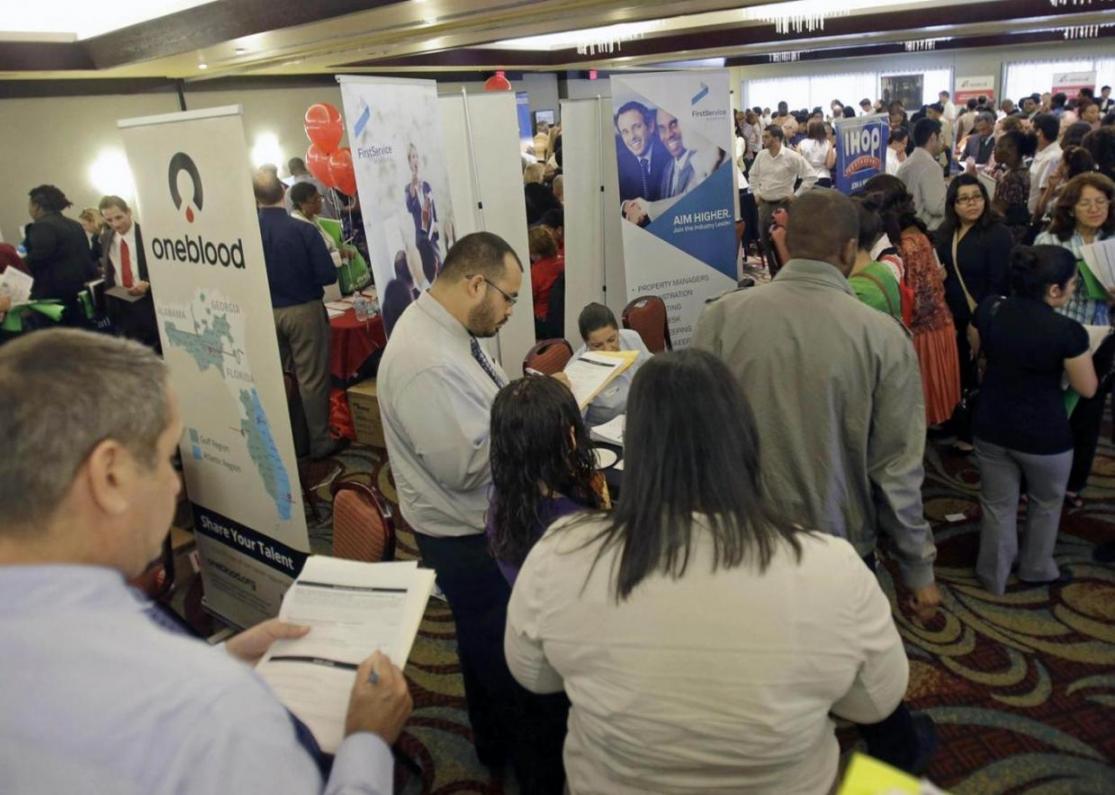The US unemployment rate is at a record low. Yet, many unemployed and low-income Americans are critical and don’t feel their situation has improved.
It is certainly not the impression you get from looking at the current US unemployment rate. According to the latest data, the unemployment rate is down to 5.8 percent. In October 2014, for the first time since the Great Recession in 2008, the number fell below 6 percent, DW reported.
There are, however, good reasons to be critical of the 5.8 percent, as the jobs are not the same as before.
One reason has to do with the quality of jobs. “What has happened is that low-wage jobs have now grown,” says Michelle Holder, an assistant professor of economics at John Jay College of Criminal Justice in New York.
“When our president talks about the fact that we did regain the jobs we lost,” she says, “the problem is that a majority of those jobs are low-wage jobs, like jobs in restaurants. They aren’t the jobs we had before.”
Even though some previously unemployed people might have a job now, they often work in lower skilled positions for less money.
One Sixth of the Story
Another reason seems to be even more important. The way the media usually reports about the unemployment rate only tells one sixth of the story.
For their unemployment statistics, the US Bureau of Labor Statistics interviews 60,000 households all over the US. In this survey, they ask for various types of information.
Based on that, the government agency releases six different measures of unemployment – the 5.8-percent figure is actually just one out of those six measures. Per definition, the number measures people who are unemployed, but are actively seeking employment and willing to work.
Labor Force
The unemployment rate does, however, not say anything about people who are officially considered to be “not in the labor force.”
The United States has the largest number of young people going to colleges and by far the largest prison population. The unemployment rate does not include them. These are all ways the unemployment rate is problematic, Americans say.
The number of people considered not in the labor force has continued to grow since the recession.
Although the unemployment rate has dropped, there are in fact fewer people with jobs.
Trade Gap Narrows
The US trade deficit narrowed in October to $43.4 billion as exports increased more than imports, according to Commerce Department data released on Friday (Dec 5), AFP reported.
The September deficit was revised to $43.6 billion from the previous estimate of $43.0 billion.
The nation’s shortfall in trade in goods and services in October was larger than analysts expected, with the consensus estimate at $42.0 billion.
Exports of goods and services increased $2.3 billion to $197.5 billion, mainly reflecting an increase in capital goods exports, the department said. Imports rose $2.1 billion to $241.0 billion.
The petroleum deficit widened to $15.2 billion from $14.0 billion in September as petroleum exports fell sharply to just below $11.0 billion from $12.3 billion.
The politically sensitive goods trade gap with China shrank 8.4 percent to $32.5 billion, despite a record $45.2 billion in Chinese imports. US officials say China keeps its yuan currency undervalued, giving the world’s second-largest economy an unfair trade advantage.
With the European Union, the trade gap expanded 8.5 percent to $12.7 billion.
In the first 10 months of the year, the US trade deficit rose $20.5 billion, or 5.1 percent, from the same period in 2013.


